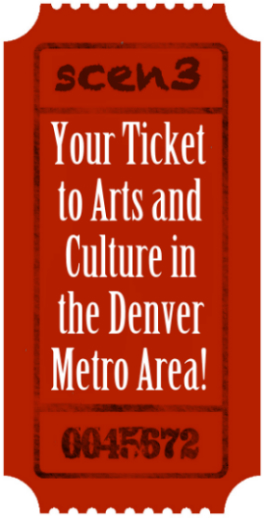Boulder Concert Band surveys America
A review by Ruth L. Carver
The bright, brassy sound of a concert band is hard to miss, and the Boulder Concert Band does a splendid job of playing with a bold and celebratory air. They are the heir of a great tradition of local volunteer bands, and under the direction of Dr. William Kinne, share the unabashed joy of this music with ease. On April 18, a program called “The American Experience” offered a potpurri of patriotic and lesser known works. Performing in the school auditorium of the Nevin Pratt Middle School in Boulder, the band spilled into the wings and had a powerful, grandiose sound too big for that modest space.
Spoken program notes by Jeff Gagliardi gave the concert an informal air, and the exhibit in the hallway by the Leanin’ Tree Museum of Western Art emphasized a particularly outdoorsy version of Americana. The band opened with Robert Russell Bennett’s Suite of Old American Dances. As Bennett himself explained, this 1949 piece has “no particular purpose…except to do a modern, and, I hope, entertaining version of some of the dance moods of my early youth.” These dance forms are now sadly unfamiliar to modern audiences, but the BCB exhibited some fine playing, especially with a slinky clarinet melody in the “Schottische” dance, and a swaggering trombone section in the “Western One-Step.” Kinne is an almost preternaturally calm conductor and kept the group moving along well, but perhaps didn’t consistently capture the dancing moods Bennett had in mind.
William Bolcom is among the foremost living composer who can capture the offhanded sound of jazz within a classical composition. His Graceful Ghost Rag is an amiable, laidback rag, and guest conductor Peter Lillpopp (a doctoral student at CU) led the band with an easy yet energizing hand. The first half of the program closed with Vincent Persichetti’s 1954 Pageant, a tone poem-like ode to the pastime of parades. A slow, sacramental opening builds to a distinctive parade section, but the various melodic and harmonic ideas needed more nuanced delineation to be clear. Perhaps a larger venue would allow for greater musicality and range of dynamics to emerge in this capable group of musicians.
Two Charles Ives pieces showed more range – his jocular and grandiose Variations on “America” runs the gamut in evocative stylistic gestures (like a Spanish-themed take on “My Country ‘Tis of Thee” replete with tambourine and castinets), and the BCB was deftly led by Kinne revealing a big, powerful sound. The original version was composed for organ, and Ives’ trademark polytonality was effectively reproduced in this arrangement for band. Ives’ Old Home Days (arranged by Jonathan Elkus) is an earlier work, and is musically less interesting; here the band had a few ensemble issues, but the jaunty, off-kilter effects of the final movement, “London Bridge is Fallen Down” gave a hint at the singular genius Ives had in turning a familiar tune upside down.
A concert band (whether professional or at your local high school) will of necessity play many arrangements of pieces not originally composed for the ensemble of winds, brass, and percussion. John Krance’s arrangement of George Gershwin’s classic An American in Paris does achieve a some wonderful colors, but pales in comparison to the cacophonous yet graceful original. The concert closed with a lesser known John Phillip Sousa number, Easter Monday on the White House Lawn. This frothy meringue of a march was a perfect closer and showed the Boulder Concert Band at their best, perfectly capturing a most American event – the Easter egg roll at the White House. The American experience surveyed here was a lively, playful one – underscoring that quintessential, irrepressible optimism of national spirit.










